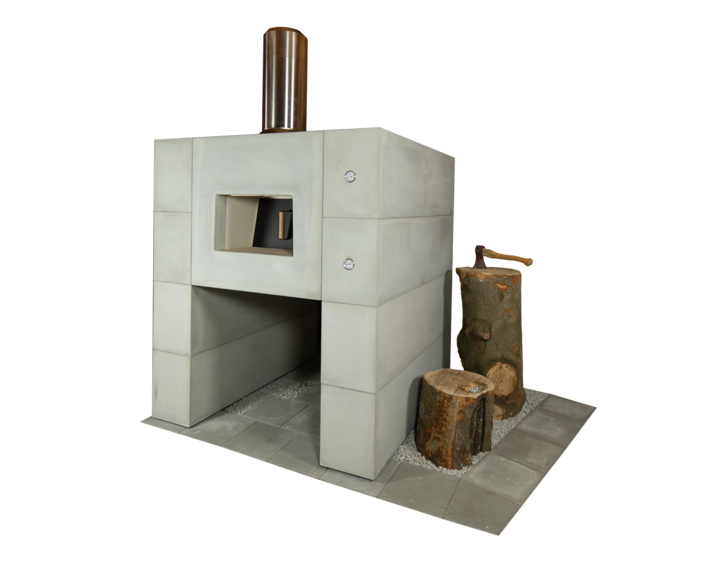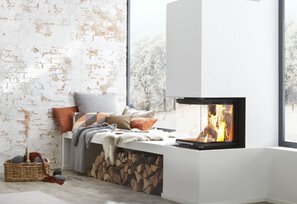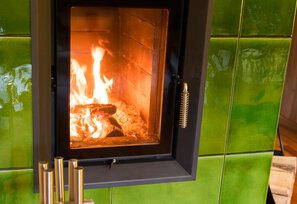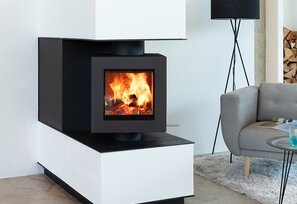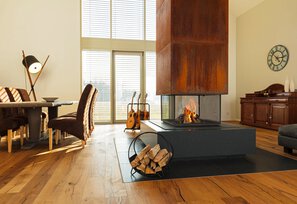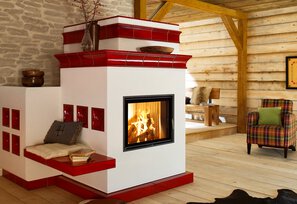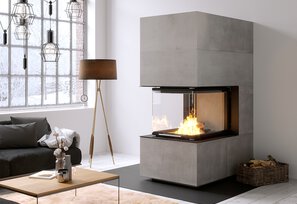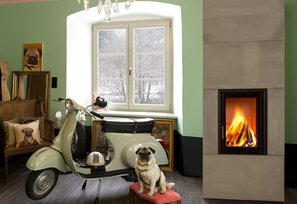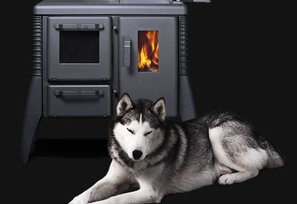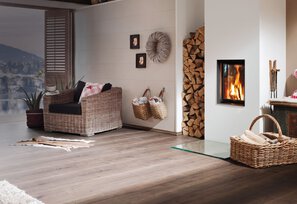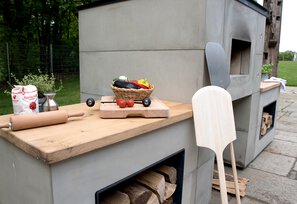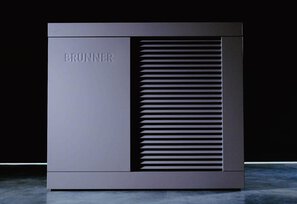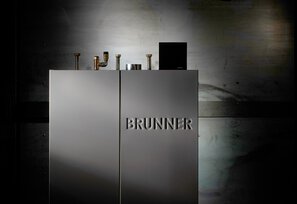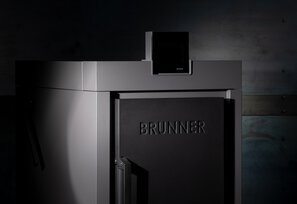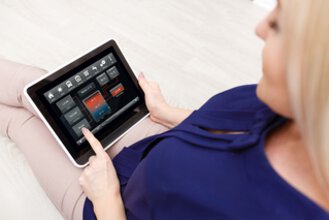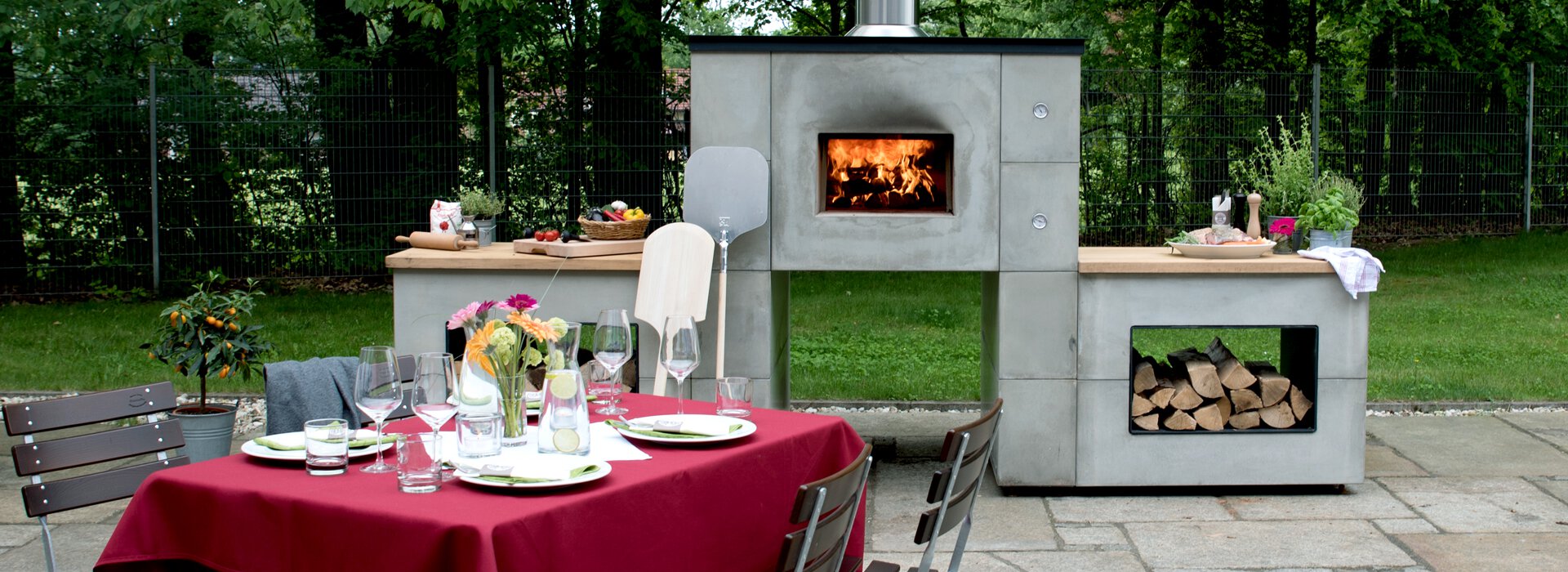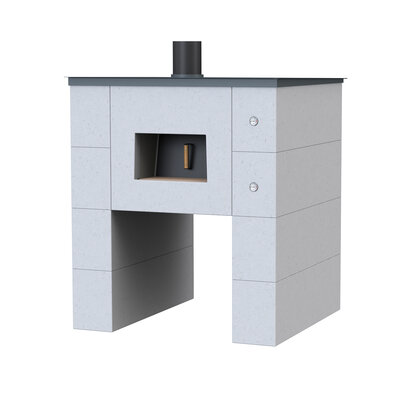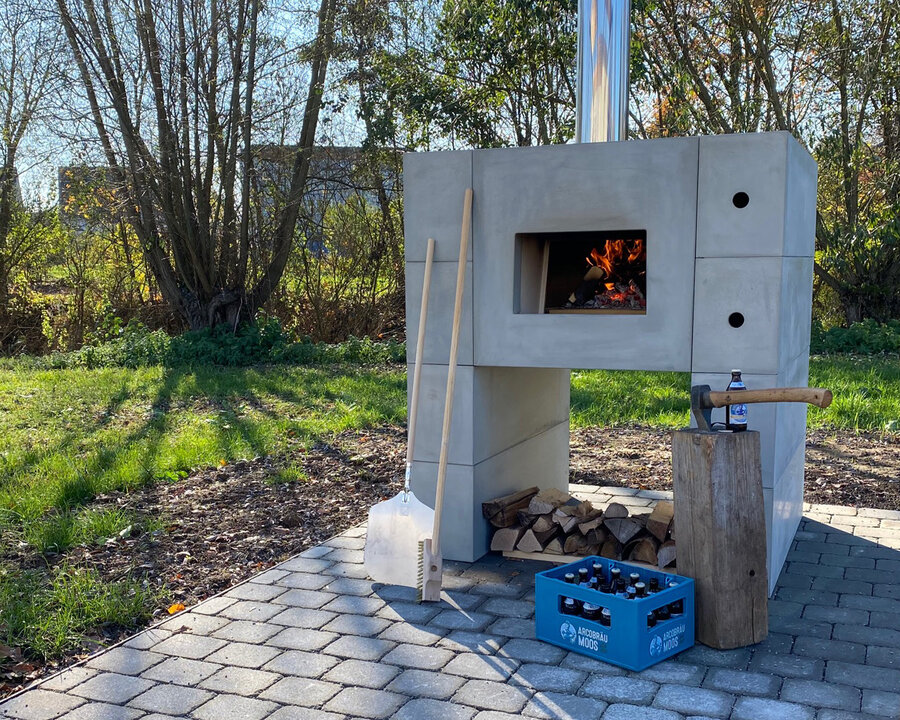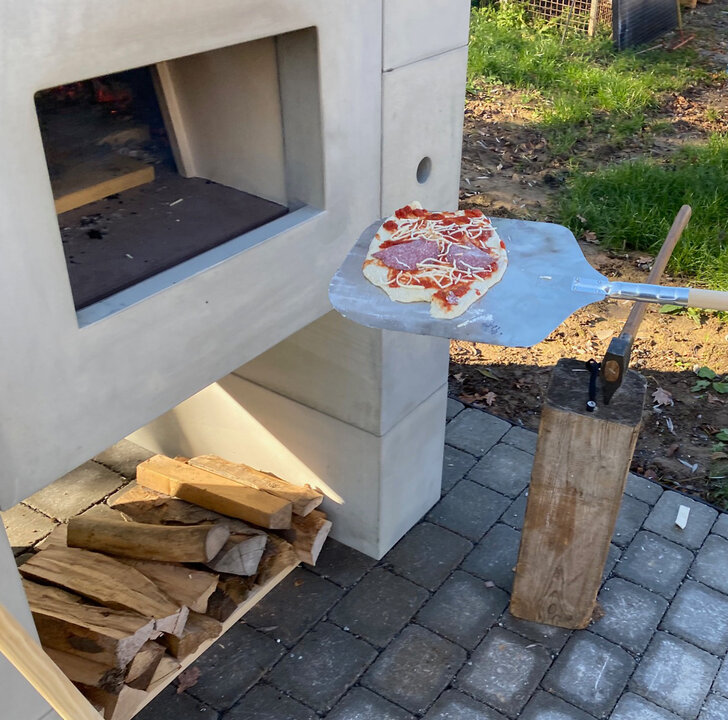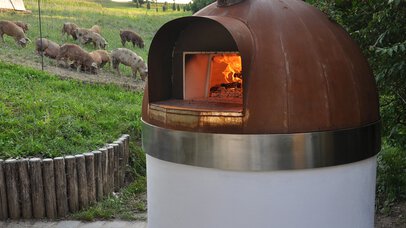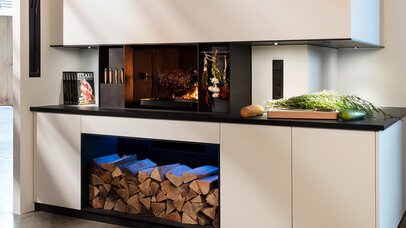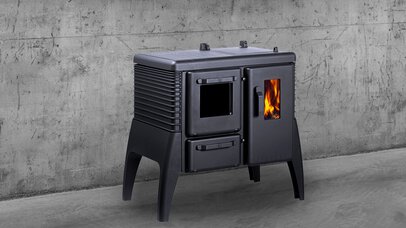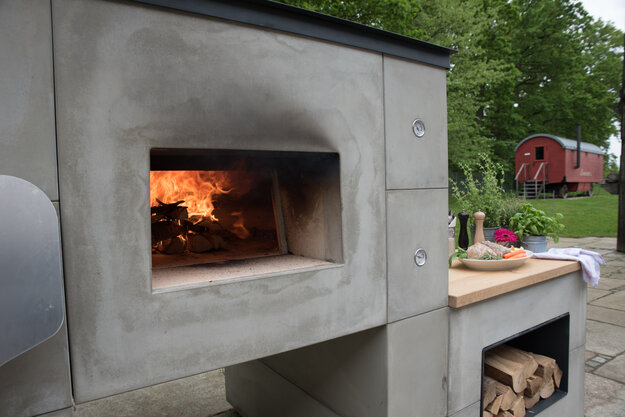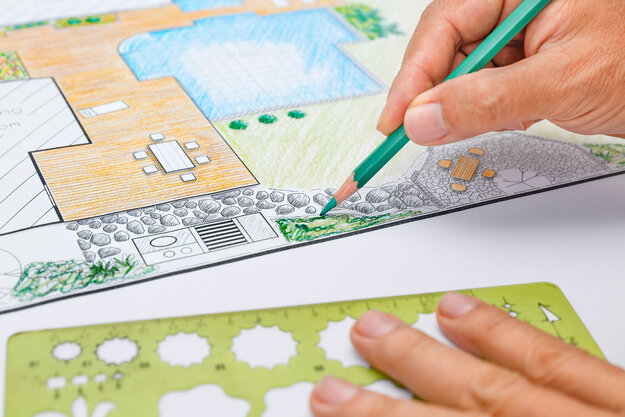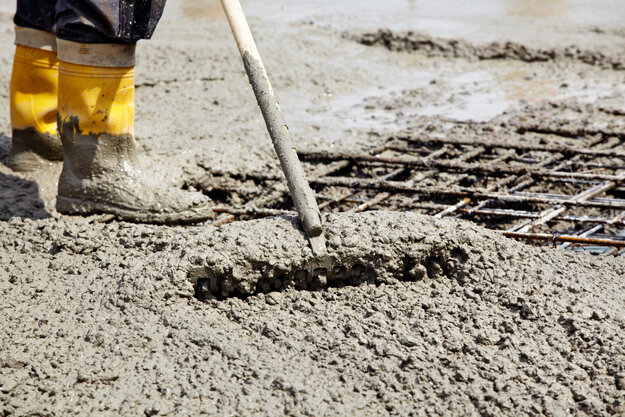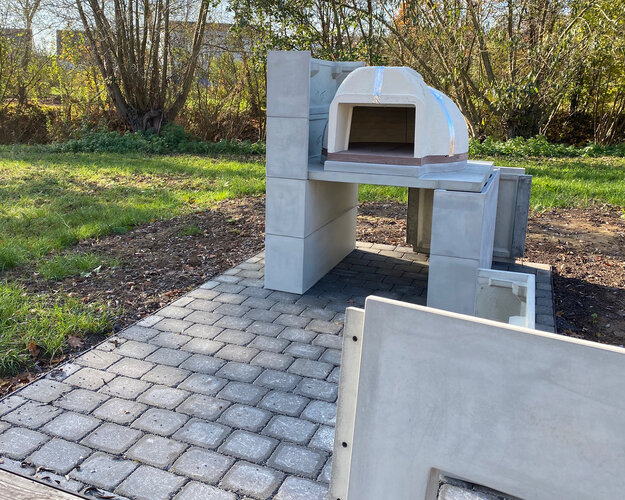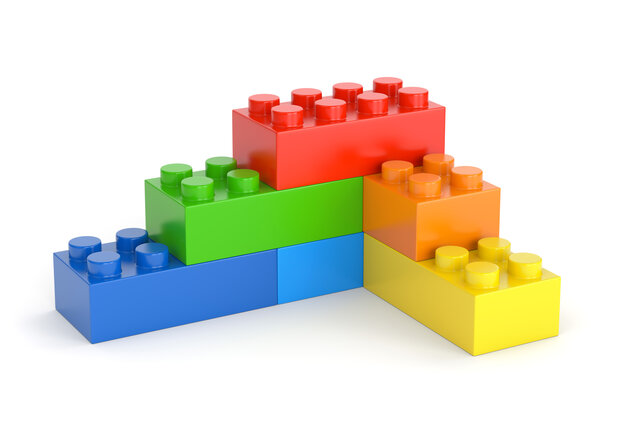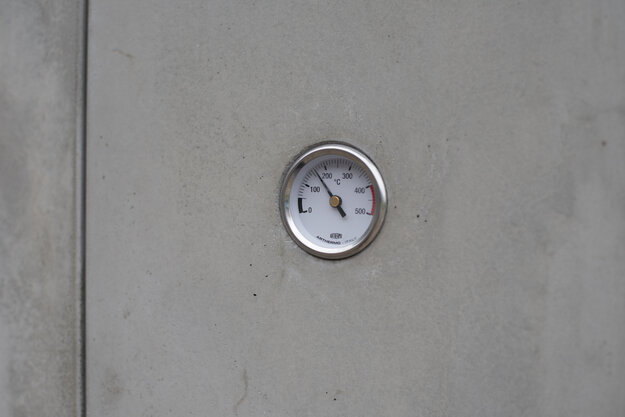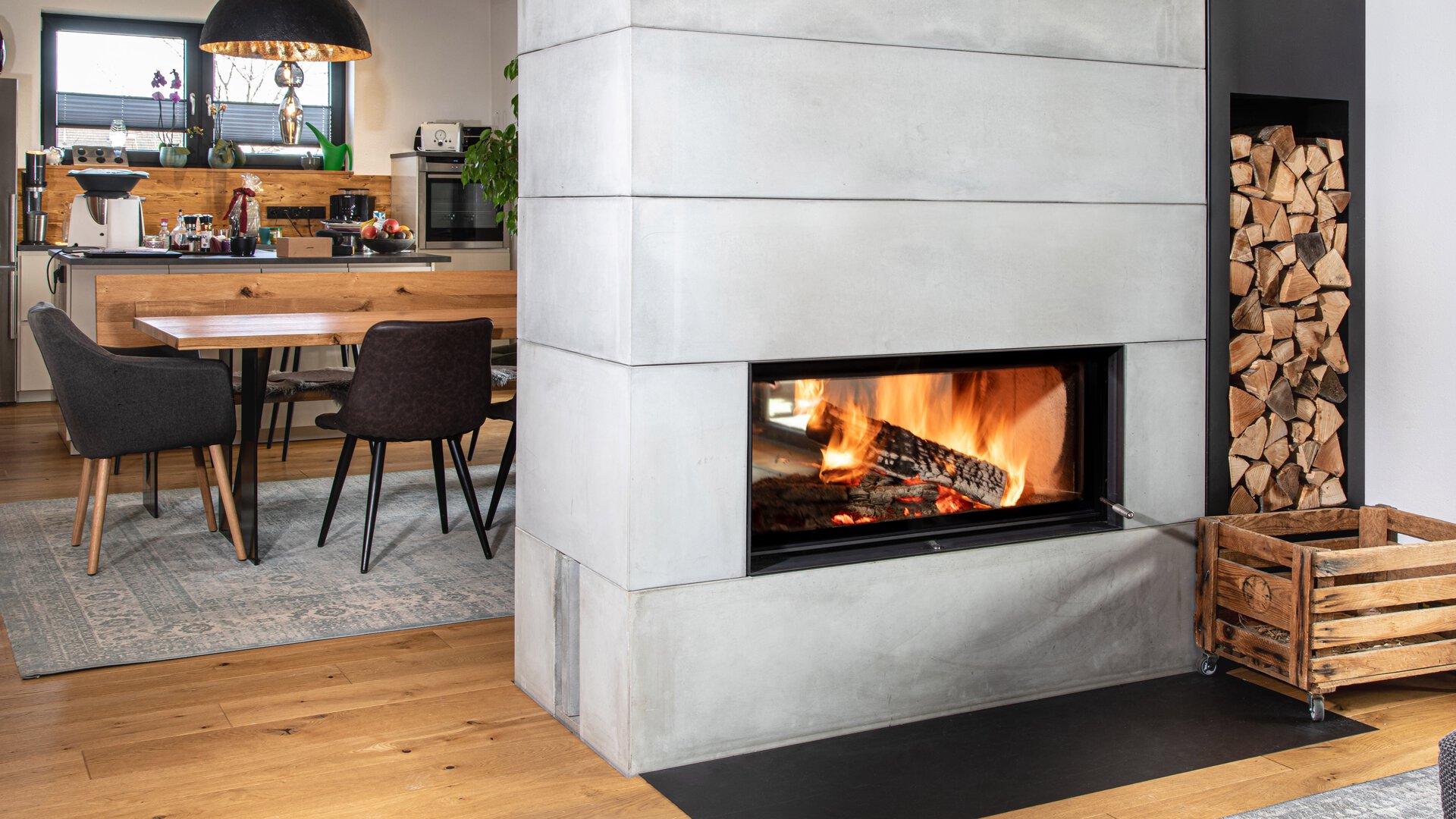Grannus
The wood furnace for the garden
Thermal concrete optics
As the name suggests, a wood furnace is heated with wood as a fuel. Traditionally, it is made of bricks, as in grandmother's time, and stands weatherproof in the garden or, in the case of farmhouses, in the protected courtyard. It is a real building that cannot be moved later on and is therefore a lifetime purchase. Bricks or clay are usually used for the construction and refractory concrete, firebrick or bricks for the outside cladding.
It is unusual to connect an electric furnace in an open-air kitchen. Instead, you can install a brick furnace. With its GRANNUS, the Lower Bavarian premium manufacturer BRUNNER offers an entire wood-heated baking house, also called a "baking temple". Here, every pizza, every tarte flambée turns out perfectly, as does homemade bread or a tender roast. However, cooking and baking in the open-air kitchen requires some lead time. Only after two to three hours and just as many burn-offs will the kitchen reach temperatures of around 500 degrees. The firebricks ensure that the heat is stored for a long time and is released evenly and slowly. Cleaning the GRANNUS is child's play; the white ash, which no longer contains any charcoal, simply needs to be swept out from time to time and not necessarily after every baking or cooking process.
Wood furnace for outdoors
How to cook with the Grannus
Baking your own bread is in vogue. Not only cakes and pastries, but especially fresh breads, pizza or tarte flambée. And when coming out of a traditional wood furnace, these dishes taste even better.
What goes into the wood furnace first depends on the required temperature.
- The hottest temperature level 1 is ideal for pizza. The wood fire acts like a side burner, the heating gases rise to the top creating an intense top heat. Pizza or tarte flambée are ready after just one or two minutes.
- Step 2 is suitable for all meat dishes, but the Grannus must first cool down to about 270 to 250 degrees. With the cast-iron GUSSTO roasters, pans and saucepans by BRUNNER, any roast can be cooked easily.
- Breads are baked at level 3 from around 220 degrees. The right temperature is determined in this way: Sprinkle a little flour on the bottom of your oven at intervals. If it turns black and chars, it is still too hot. Only when the flour is just browning should you put the loaves in the oven for 50 minutes.
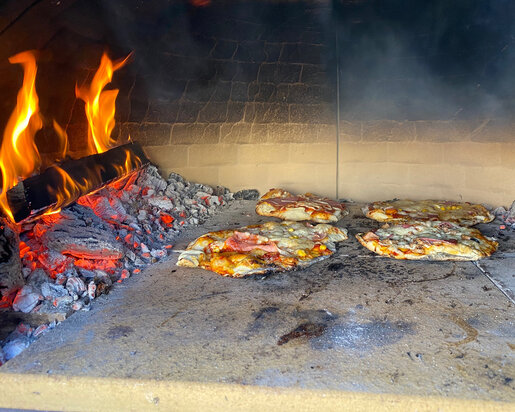
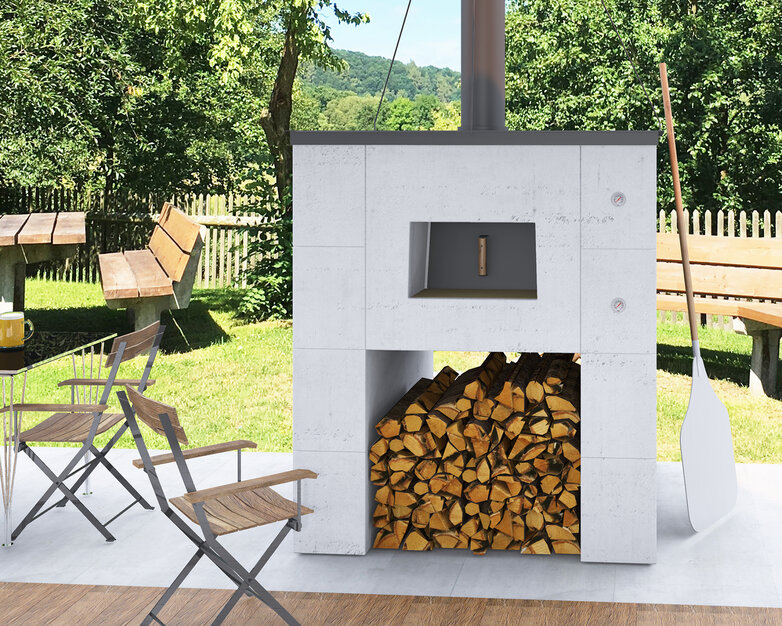
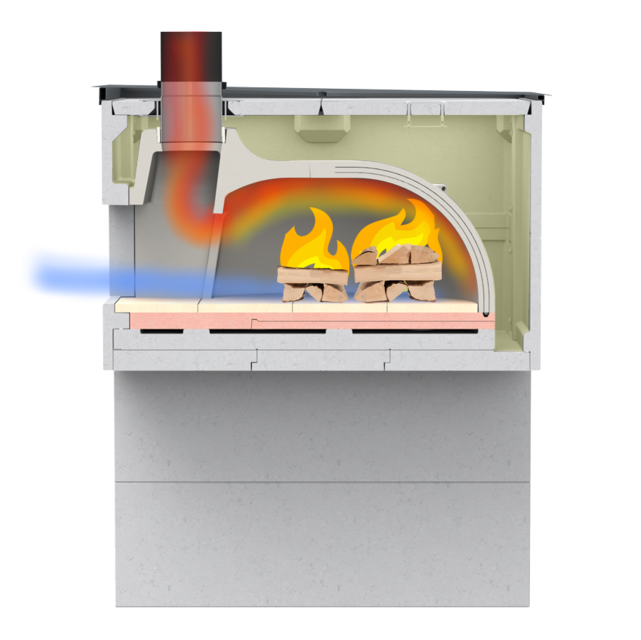
Grannus
In modern thermal concrete cladding
To light the stove, place firewood, chopped as small as possible, on crumpled newspaper and light it - then add larger logs. The stove dome turns black at the beginning, but when the right heat has been reached, this accumulated soot burns off again. To increase the temperature further, close the door as soon as there are only embers left. It takes about 2-3 firings with max. 7 kg of firewood each to reach the right temperature.
Pizza, vegetables or meat are prepared first - bread comes last, as the residual embers and ashes have to be cleared out of the oven for this. In this way, the heat can be used optimally. For longer baking times, it is advisable to use the fireclay insert to separate the baked food from the embers.
Functioning
Functioning of the classic wood stove
The wood stove consists of a brick cavity, which often has the shape of a vault or a clay dome, hence the name dome stove. This cavity has a chimney flue at the top and an opening at the front. The fire is lit in the cavity, which heats up the entire masonry. This is called direct firing. Alternatively, there are systems with a separate firing chamber. A special wood furnace thermometer indicates the temperature; it can withstand heat up to 500 degrees Celsius. Once the wood stove is hot enough - the initial heat is around 320 degrees - and the wood and embers have burnt down, the baking chamber is cleared out. It should then be left to stand for a quarter of an hour, which allows the heat to spread evenly in the oven. Put the bread, pizza or tarte flambée in the oven. In this wood stove, it receives strong but slowly decreasing heat or radiant heat from each side and, through the precipitation of the wood fire, the typical, unmistakable aroma. After four to five hours, a wood stove still has a heat of around 180 degrees. Reheating is not necessary.
Indirect burn-off
In a wood stove that is indirectly fired, the baking chamber and the combustion chamber are separate, so the appliance consists of two chambers that lie on top of each other. This has both advantages and disadvantages. One advantage of a wood stove with indirect firing is that the fuel does not have to be removed for baking and cooking. In addition, neither smoke nor flames can reach the food being baked. On the other hand, this type of wood furnace takes a long time to heat up, or the heat takes longer because it first has to spread from the firebox into the cooking chamber.
Grannus
A BRUNNER kit with a system
The Grannus is a wood-heated bakehouse, the shape modern and simple. But the grey block cube houses everything it takes to bake bread, pizza and tarte flambée. Juicy roast meats are also perfectly prepared. And with all the power of the wood fire. The elements of the baking vault are cast precisely from fire concrete. They are dry-assembled on the base plate. The vault bricks and vault components are held in place by the interlocking tongue and groove system. The construction is easy and can be implemented quickly. The hollow structures around the fire igloo - which can also be erected separately - are filled with an appropriate insulating fill. All components are designed for domestic use.
To light the stove, place finely chopped firewood on crumpled newspaper and light it, then add larger logs. The stove dome will turn black at the beginning, this is normal. As soon as the right heat is reached, this soot burns off again. Do not close the door until there are only embers left, this way you can increase the temperature even more. After two to three burn-offs and a maximum of seven kilograms of wood, the Grannus is hot enough. Grannus and Fire Igloo guarantee culinary enjoyment in the open air.
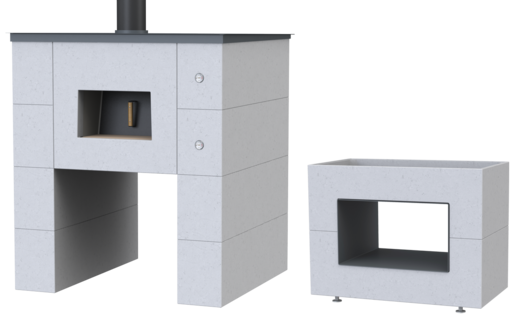
Work with your furnace builder to create a unique baking experience.
